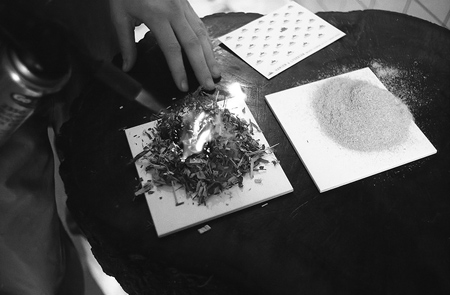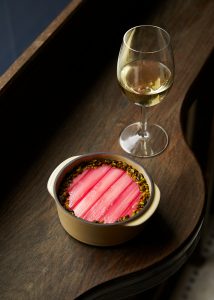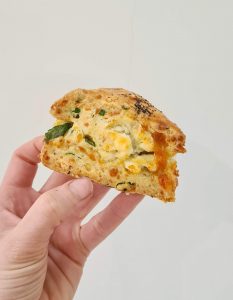From Norway to Stoke Newington, Ole-Martin Hansen on how his family heritage has helped him create his own niche within the luxury food market, and how those traditions have kept him grounded
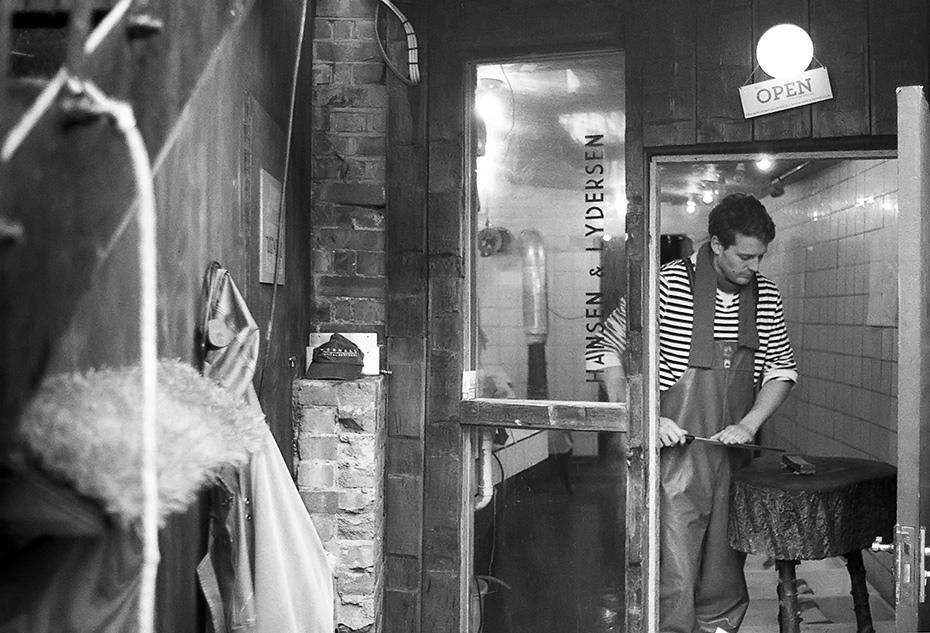
As we walk into to the yard of Hansen & Lydersen’s we hear Singing in the Rain playing loudly from speakers in the back office, accompanied by the vocal styling’s of owner Ole-Martin Hansen. “Hello”, I call over the music, interrupting his private sing-along moment, worried I might embarrass him. “Hel-lo, and welcome” Ole sings back at me, imitating Gene Kelly’s pitch. He proceeds to introduce himself through the medium of song. Welcome to Hansen & Lydersen. It’s an unusual greeting, but Ole is anything but usual. Broad and blonde, he towers above me, a dizzying six-foot-and-a-good-something to my five-foot-two. His enthusiasm is both disarming and infectious, and as he whizzes around his preparation station, cleaning it, we’re sucked into a philosophical discussion about romance and life – suddenly, the smoked salmon we came to discuss is almost forgotten. We’re hopping from Chopin to heartache, tailoring to shrimp (his favourite fish – or crustacean– I’m surprised to find). Then, he picks up a fresh salmon, hooking it through the mouth with his fingers and carries it to the sink, where he begins preparing it.
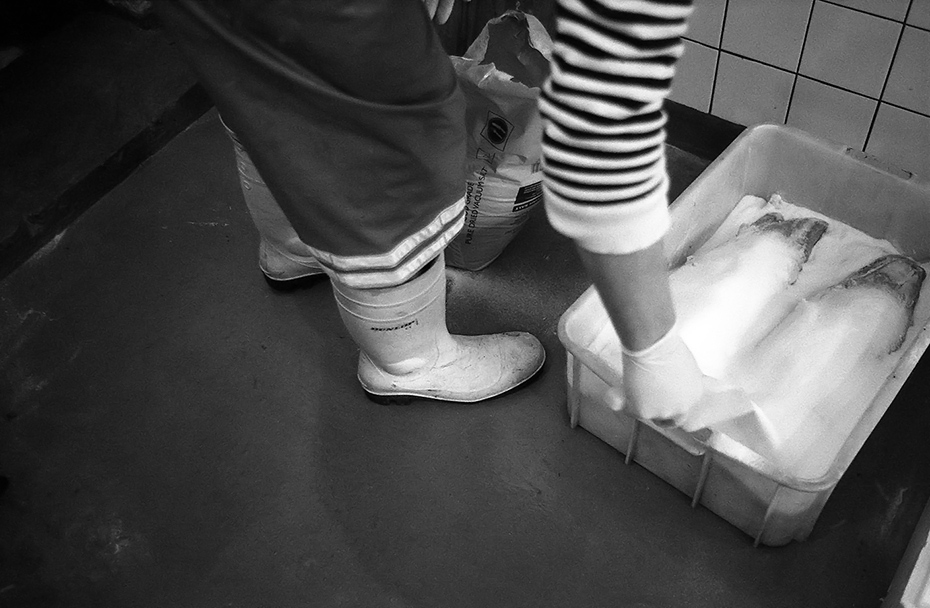
Ole’s story is a successful, albeit eccentric, and round-about one. “I studied sound arts here in London for three years, but I found it difficult to make a living. I wanted to do something self-sustainable, that would help me fund future projects, but that still had tradition”. That heritage came from his family: Ole’s great-grandfather Lyder-Nilsen devised the recipe that he uses today, back in 1923. A fishmonger by trade, he started the family business in Finnmark, Norway, and passed it on to his son Leif in the early 60s, who in turn passed his expertise on to his daughters, who chose not to continue the family business. But it was this family tradition that Ole turned to when looking for his self-sustaining project.
Using Lyder-Nilsen’s original recipe, combining juniper, which Ole now sources from his brother’s farm, and beech wood (in a ration of 7:3) to create the subtle, sweet smoke used to infuse the salmon with its distinctive smoky flavour, Ole has recreated the flavour he remembers so vividly from his childhood. Using sketches of his grandfather’s Finnmark smokery, he’s also recreated the family business in London, and added his own touches. “His concept was that the salmon should move in the wind, gently swaying – he believed that the movement would put energy into the fish. That was his tradition: now I play piano every time we close the smoking chamber – that’s my addition.”
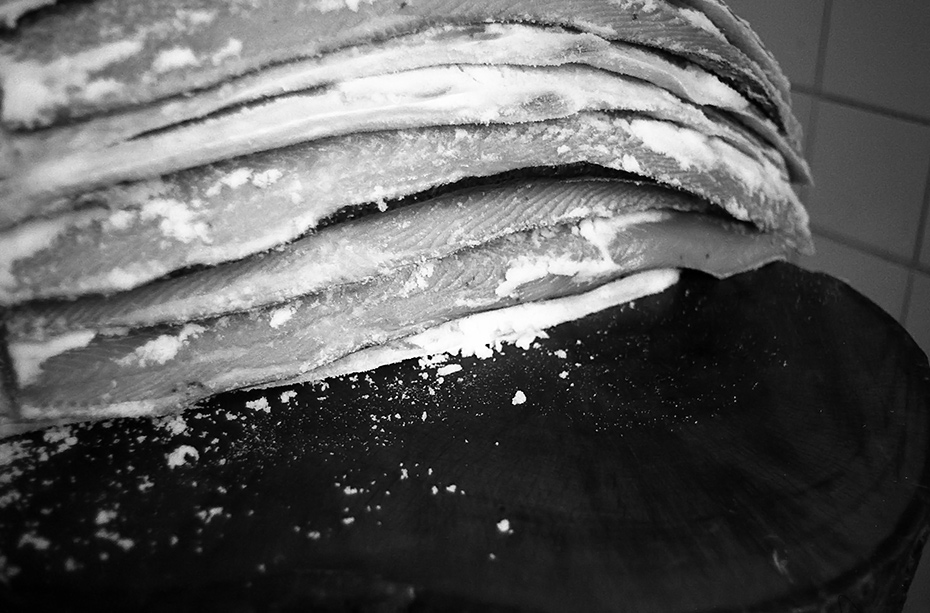
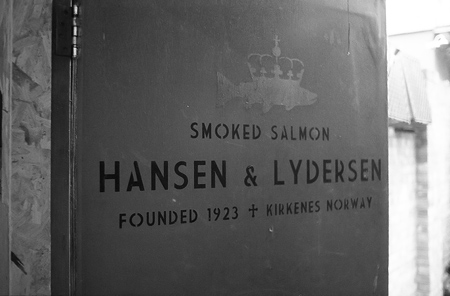
Ole’s days are long, and his methodology is labour intensive. “The salmon comes in early every morning at around 4am. It comes from the Faroe Islands by ferry, and then lorry. I fillet it here, on site using a technique that’s very Japanese – I studied under the head chef at Nobu for a while – it is very similar to the Scandinavian in how it focuses on heritage and respect for what you’re eating”. “After cleaning and filleting, the salmon is left for 12 hours in Fleur de Sel de Guérande salt from North West France. I get it from there because the Vikings used to get salt from there to cure their cod. It gives flavour – it’s a really sweet salt.” A vacuum salt is used over the top to draw out any remaining moisture, then “after 12 hours, it’s finished, and I can feel just by pressing on the top of the salmon if it has the right texture. Taking them one by one, I thread them with a needle, hang them by the sink, rinse them gently and them take them out to the smoke chamber after an hour where I turn the fans on and begin the smoking process”. Smoking is the lengthy part of the process: loading the beech wood and juniper into his ‘ugly’ garland chimney (“which I bought for £15 from Homebase when I was setting up” to which he’s now sentimentally attached), Ole explains the manual nature of what he does. “You have to learn the chamber, by feel; you have to understand it: it regulates the air flow and I have to be up at night to stoke the fire. I can’t just leave it. That’s actually the main point of what I do, it’s been a life choice”. In addition to controlling his own finances, and reconnecting with memories from his childhood, Ole is connecting himself with artisan culture: “I don’t know if you’ve read Narcissus and Goldmund, but there you have the theorist and the artisan. I want to try to be an artisan… study one process, perpetually until there’s not much else to learn.”
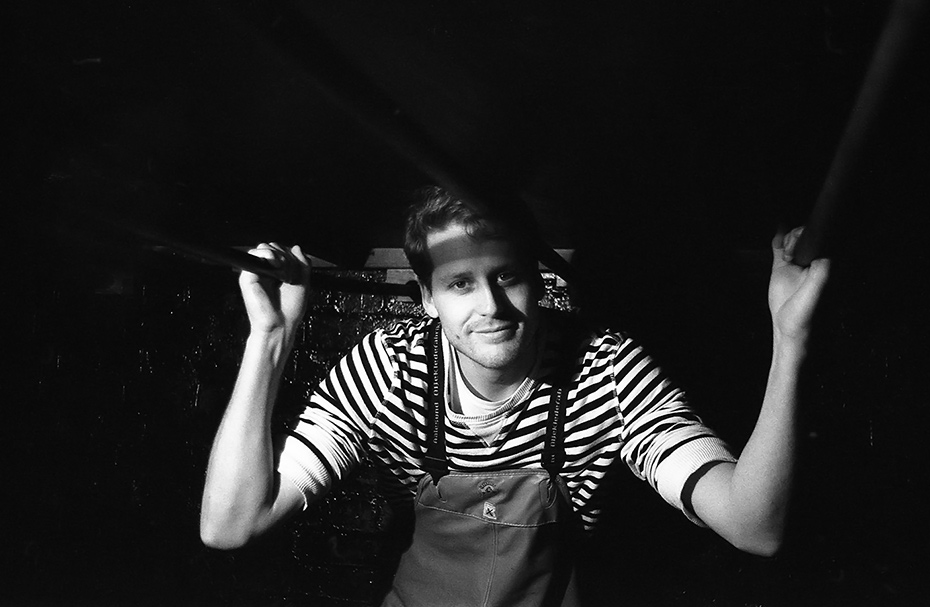
Ole supplies high-end restaurants with his produce, including Sake No Hana, The Albion, Nopi and Viajante, as well as local consumers. Hundreds of miles from the Faroe Islands, and (less) from the British coastline, why did London have to be the place to set up his business? “People thought I was crazy, but I never thought about it as odd. I just thought about making beautiful salmon and offering it to people. There’s 12 million people here – I don’t want to go anywhere else… I have people coming from Italy, Spain, Japan – I sell my salmon to a sheik in Kuwait who sends his private jet to buy it. The local economy is changing.”
When I ask him what his goals are for the future, Ole replies earnestly: “I want to expand and create a place where people can work and live with each other, so that it’s not just a job to pick up a pay-cheque. The most interesting jobs I’ve had in my life have been for companies where you don’t feel like you’re working – you’re enjoying it.” He’s also hoping to go on tour: “I’m designing this shipping container, a glass cube where you’ll be able look into it from 360 degrees. It’s divided into three glass compartments: the salmon will be smoked in the middle with one end for filleting in and the other for packing. The idea is to travel around with it to show off the process. We might bring it to New York, or to Tokyo, or to a mountain up in Scotland, to show people the process. I think it’s grounding to watch people work. Maybe children will come and have a look through the windows, like I did when I was a child when I was seeing small producers, thinking, ‘Wow this is amazing!’” www.hansen-lydersen.com
